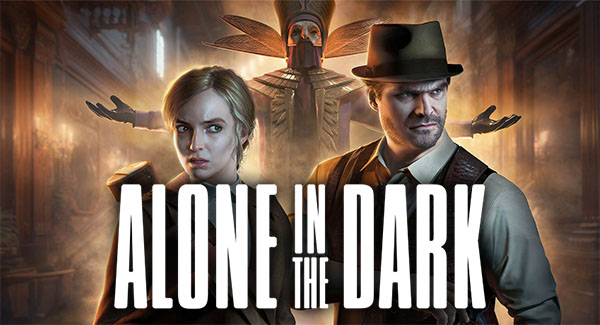
After playing the ridiculously short Prologue demo last year, I was kind of on the fence about playing Alone In The Dark -- let alone paying full retail price for it. Then I started seeing the mixed critical reviews, with some outlets giving it a 6/10, and other giving it an 85/100. I started to think that maybe I could just pass on it, and check it out later when it hits the bargain bin. Ironically, it was actually a negative review of the game that actually convinced me to buy a new copy. That review (I don't remember the review's source) said that Alone In The Dark feels old-fashioned, and that it emphasizes puzzles in favor of combat or action.
The Prologue demo (all 5 minutes of it!) did not make a good impression.
That actually made me want to play the game! Further, it encouraged me to buy a new copy, at retail, in order to support the niche genre of old-fashioned, slow-paced, puzzle-oriented survival horror, and to show that there is definitely still a market for such games. Horror games do not all have to be either over-the-shoulder shooters a la Resident Evil 2 REmake, nor P.T.-clone walking simulators that take place in residential hallways. I want to see more Eldritch survival horror games that are carried by intrigue, mystery, and genuine terror, rather than action spectacle or cliche "psychological" horror tropes. It's the same reason I bought and played Song Of Horror (which is a much better and more clever game).
The first hour or so of gameplay definitely vindicated those negative reviews. From the start, there were technical and performance problems. The framerate seemed to occasionally stutter, textures and assets would pop in, and the controls seemed a bit floaty (though better than in the Prologue demo, at least). Also, interaction prompts would disappear if I was too close to them, which made it unclear if an empty cabinet was really just an empty cabinet, or if the game was bugging out and not letting me pick up whatever happened to be inside. Other times, a button prompt would appear, but the interaction didn't actually work. And character dialogue and animation came off as unnatural and fell firmly within the uncanny valley. This is all despite the fact that I didn't get around to starting the game until a couple days after its release, and after I had already downloaded and installed a day-1 patch that was almost as big as the actual game on the disc! Good thing I had cleared out extra hard disk space on my PS5 the night before.
The Day-1 patch is almost as big as the whole game?!
I chose Emily as the character for my first playthrough, since her story of trying to find her uncle seemed like the actual story of the game, in stark contrast to the private investigator who is only even here incidentally at Emily's request. But I wasn't sure if I was getting myself into some kind of un-labeled "Hard Mode" similar to picking Chris in the original Resident Evil. I mean, I didn't even know if she would be starting the game with a gun, or if she would even be allowed to engage in combat at all. She does, and she can.
The early combat encounters sure as hell felt like I was in some kind of hard mode. Alone In The Dark loves to ambush the player with cheap shots. Heck, the very first enemy encounter in the game (playing as Emily) is a monster that jumps out at the player from behind a blind corner. It promptly pinned me into a corner and almost killed me. I guess that's one way to establish the threat that the monsters pose. It's also a great way to make the player think that the monster encounters are going to be cheap and unfair.
I was concerned by the fact that I felt like the game was overloading me with bullets and healing items right from the start. Why would I need all of this ammunition and health right from the start? Unless it is because the monsters are going to be bullet sponges that will be dealing cheap, unavoidable damage? I was getting unpleasant Callisto Protocol flashbacks.
The game would go on to ambush me a few more times during Emily's opening chapter, as well as get plenty more cheap hits and damage in. I would also go on to pick up a couple of melee weapons, only to have them break after killing a single enemy with it. When I switched to Emily's pathetic little pistol, each enemy seemed to take exactly 1 more bullet to kill than the gun could hold, meaning I had to reload during every single gun fight -- against the first enemies in the game, on the normal difficulty level.
Frequent ambushes sap health and lead to cheap deaths.
I was already starting to fear that this game would turn into much more of a painful combat slog than the reviews made it out to be.
That fear was partially justified. The game's combat just doesn't feel good, and there's far too much of it for my tastes. I've said it many times before, but I miss the good ol' days of survival horror, when deciding whether or not to even engage with a particular enemy was a strategic choice, exploration felt more open-ended, and long-term resource-management was the biggest challenge.
This game frequently forces the player to engage in combat in close quarters. At this range, aiming a firearm isn't reliable, and I repeatedly missed point-blank shots that I felt should have been gimmies. The melee weapons aren't much better. In addition to having the durability of a wet paper straw, I had trouble judging distances, and often swung the weapon wildly, missing my attacks and leaving myself exposed.
Combat gauntlets are few and far between, however. A large chunk of the game is simply exploring the Derceto manor, which is completely devoid of danger -- aside from a few scripted sequences here and there. There are long stretches of the game in which the player gets to wander around in near total safety, unlocking doors, solving puzzles, and collecting more resources for your regular trips outside the manor and into danger.
[More]
8d4b5722-ca54-4b10-b8df-ac4326b15862|17|2.1
Tags:Alone In The Dark, Pieces Interactive, THQ, THQ Nordic, horror, survival horror, cosmic horror, Derceto, Edward Carnby, Emily Hartwood, Jeremy Hartwood
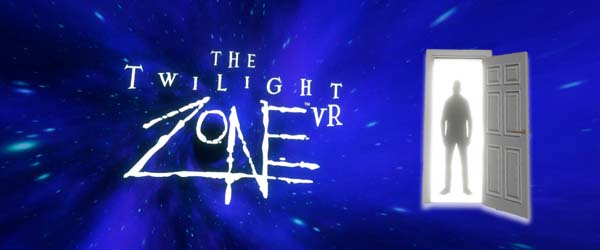
I like the original The Twilight Zone TV show. I wouldn't call myself a huge mega fan or anything, but it's easily my second favorite show from the 60's. Heck, The Twilight Zone might even hold up better than the majority of original Star Trek episodes, and the show is probably more progressive too. For one thing, it isn't loaded with as much of the casual sexism and fetishization of women that keeps popping up in Star Trek.
In any case, the PSVR2 release of a Twilight Zone game kind of came out of nowhere. I saw a preview of it on my Google news feed on my phone the day before the game went on sale on PSN. Heck, the PSN didn't even have it listed as "coming soon". It didn't even show up in the store until it was released, and I immediately jumped on it and bought it.
The game is a small anthology of 3 short, original Twilight Zone stories with some contemporary themes. I was glad to see the game divided up into multiple chapters, and for these chapters to apparently be playable in any order (even though I opted to play them in order anyway). The Twilight Zone really works better as short stories like this, as the premises and twists rarely (if ever) hold up for longer stories. In fact, trying to pad some of its stories into an hour runtime or longer was one of the biggest problems with CBS and Jordan Peele's recent reboot.
You are about to enter The Twilight Zone.
As a tiny nitpick, I will say that I don't understand why Pocket Money chose to use the term "chapters" instead of "episodes"? The use of the word "chapter" implies a small section of a larger story, with that small section not being a story in itself; while the word "episode" would imply self-contained stories that may relate to or follow one another, but which have their own beginning, middle, and end that does not necessarily depend on the other episodes. Yes, all 3 chapters do refer to one another, and seem to take place in the same continuity, and one of them kind of acts as a prequel to another. Regardless of those connections, each chapter is a completely independent, self-contained story that does not at all rely on the events of the other chapters in order to understand what is happening. You can play these chapters in any order, or play any one of them without playing the others, and it wouldn't make any difference to the perception or interpretation of the stories. And in fact, the game is perfectly willing to let the player play them in any order.
Each of this game's chapters takes about 30 minutes to an hour to play, and the whole game should be playable in 2 hours (give or take). Any of the chapters may take longer depending on how many times you might have to repeat some of its more tedious stealth or shooting sections. So these little VR stories hit the sweet spot in terms of length, and they don't over-complicate their gameplay such that it distracts from the story being told. In terms of story-telling, Pocket Money Games puts up a really solid product here. The actual game, however, is a lot less solid. [More]
a711b255-3f32-4e5e-b356-482f206f06b9|8|4.0
Tags:The Twilight Zone, The Twilight Zone VR, PSVR2, virtual reality, horror, science fiction, Pocket Money Games, Fun Train, Rod Serling, Kiff VandenHeuvel, corporate culture, crunch, video game, post-apocalypse, alien, abduction
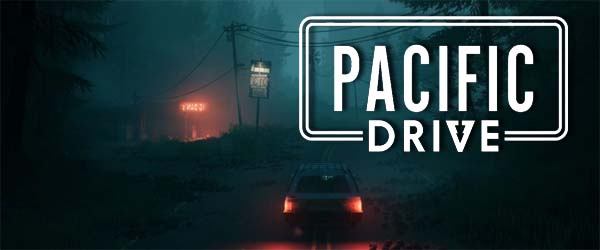
When I first saw the trailers for Pacific Drive, it was being pitched as a survival horror that takes place entirely in a car. Or at least, that was my takeaway from the initial announcements and teasers. It had me intrigued, such that I immediately wishlisted the game. However, that isn't quite what the game ended up being. Instead, Pacific Drive is more of a survival/crafting/extraction game with light-to-moderate horror elements. There's also an emphasis on logging and cataloguing everything you encounter, which nullifies much of the horror and mystery that it could have, in favor of encouraging exploration and curiosity.
The bulk of the gameplay consists of driving to different parts of the map, scavenging for materials and supplies, and using those materials to craft upgrades for your possessed station wagon. And all the while, you're scanning almost everything you encounter in order to catalogue it (from paranormal phenomena, to resources and equipment, to the different types of wrecked vehicles you find rusting along the roadside, and everything in between). Maybe I misunderstood those initial announcements and teasers. Whether I misunderstood, or the game's concept was poorly communicated, or its design simply shifted over the course of the intervening year or so (which happens), the final game errs much closer to No Man's Sky than to Resident Evil, and might even have tiny hints of inspiration from things like Outer Wilds and Portal.
The crafting focus also means that the gameplay is split almost evenly between driving and scavenging on foot. I'm constantly getting out of the car to search an abandoned building for materials, or using the various tools to break down other wrecked vehicles for their constituent parts. So the idea that the game would be played entirely from within the car also ended up not being the case. In fact, a majority of my opening hours of the game were played on foot, since so much of the early game is a series of tutorials on how to craft various tools and car parts.
Pacific Drive can be serene and beautiful, and almost zen-like.
So Pacific Drive takes a while to really get going. Whether it's the sub-genre-defining horror game that I anticipated, or a more trendy survival/crafting/extraction game with a driving gimmick, Pacific Drive still turned out to be quite good and addicting. In fact, the survival and extraction focus might even have made it a better game than what I was envisioning in my own mind.
Grab 'n' Go
Pacific Drive's core gameplay loop is more akin to an extraction shooter, except that it's single-player PvE (Player vs Environment), and the player uses a possessed, beat-up old station wagon as your primary method of locomotion and eventual escape. You choose an area from a map menu, and the specific details of the area are pseudo-randomized each time you enter (and can change if you return later). You drive around the area, collecting any resources or materials you find, avoiding paranormal hazards, and occasionally finding documents or audio logs that slowly explain what happened to the Olympic Peninsula Exclusion Zone.
But there's also a ticking clock, and this is where the "extraction shooter" influence appears. If you lollygag too long, meticulously avoiding obstacles, and gingerly collecting everything that isn't nailed down, a blaring siren will sound, and a mysterious Fortnite-esque "storm" will slowly engulf the area. If you get caught in the storm, you'll slowly take damage until you either escape or die. And the only way to escape is usually to trigger a warp portal that appears somewhere on the map. These portals can only be activated if you're more than a certain distance away, and once activated, the storm starts to rapidly expand. You have only minutes to drive halfway across the map to the portal and escape, with the storm breathing down your neck.
Each voyage is punctuated by a frantic race to a gateway portal.
[More]
7a4a2b03-cfb0-42a5-88af-2605cfaebb55|6|3.7
Tags:Pacific Drive, Ironwood Studios, Kepler Interactive, car, driving, crafting, survival, horror, extraction, Pacific Northwest, ARDA, science, anomaly, garage, road, forest
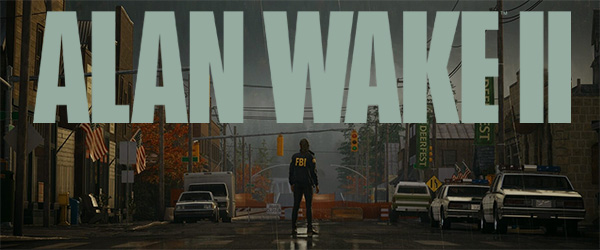
I'll give Remedy this bit of credit: in a world overrun with soul-less, design-by-committee, live-services and vehicles for micro-transaction economies, Alan Wake 2 is a game that actually has a strong creative vision and personality. It follows in the footsteps of Hideo Kojima and Death Stranding by being completely confident in itself and being un-abashedly weird. And just like with Death Stranding, that means that sometimes Alan Wake 2 is genius; other times it's confoundingly stupid and hackneyed!
It's hard even to classify Alan Wake 2 into a single genre. That goes for both narrative genre and also ludic genre. In both cases, it's kind of all over the place. At the most reductionist level, it follows the basic formula of a modern horror game: exploring creepy environments to find keys for doors, fighting monsters as an over-the-shoulder 3rd-person shooter, solving puzzles, and managing a limited inventory. So it's a "horror game", right? In fact, sometimes, it's seriously scary and disturbing. But other times, I'm questioning its "horror" status while I'm laughing out loud to a deliberate joke, or bored out of my mind because nothing scary or particularly exciting has happened in hours. Yet other times still, it's farcically campy or schlocky, and un-intentionally laughable. It's story is ridiculously out there in its concepts and execution, but somehow every beat of the plot is set up and signposted as clearly and obviously as the neon signs that point the player to the next objective in the Dark Place.
Plot twists are signposted more clearly and obviously than the neon signs that often guide the player through levels.
It's also frequently up its own ass. It is, after all, a fictional story about the power of fiction to alter reality (and our perception of reality). It even features the lead designer as a self-insert character within the story. Though surprisingly, he made himself a secondary character instead of one of the 2 playable protagonists. So it's not really about him, but he still found a way to make the entire plot revolve around that secondary character.
In the mind's eye
I feel that Alan Wake 2 is consistently at its best when its sitting firmly in its horror-mystery mode. As such, the opening couple hours of the game really pulled me in and hooked me. The game's main quest and side content are split up into various "cases" for the FBI agent protagonists to solve. There's a mechanic in which the player can retreat into Agent Saga Anderson's "Mind Space", which is an imaginary office room in which she sorts through all the clues she's gathered and strings them together on an imaginary wall in order to fit the puzzle pieces of the mystery together. Each time the player discovers a critical piece of information in the game world, it will show up in the Mind Space's filing cabinet as a new file in a case folder. Putting the clues together in the right way will unlock new lines of inquiry, and can even reveal the next objective.
Agent Anderson can review the known evidence in her imaginary Mind Space office.
Apparently, the actual game doesn't even pause, and continues to play in the background while the player is in the Mind Space. Even though the Mind Space is a full-screen environment, the character can still be attacked by enemies in the "real world". At first, I thought this would be obnoxious, but after the first time I was attacked while trying to re-arrange items on the case board in the Mind Space, I learned my lesson. After that, I actually came to realize that that needing to find a safe, peaceful space in order to let the character think about clues they've discovered (and how to proceed), really helps to emphasize the danger and stakes of the situation.
Arranging the clues in the Mind Space is not very difficult or complicated. It's not like having to solve a person's fate in Return of the Obra Dinn, or anything like that. Most of the time, the process is just going through the motions. Even when there are multiple options for where a piece of evidence can go, the solution can be easily brute-forced without the player having to know anything about what's going on.
The Case Board is an immersive quest log and objective tracker.
Even so, the Mind Space is a creative idea for presenting objectives, quest logs, story summaries, and characterization. The Mind Space at least tries to force the player to have to engage with the events of the story in a meaningful and immersive way. The player has to at least pretend to know how the various events of the story, the characters, and the McGuffins you find all fit together in the broader story in order to progress the main story or side quests.
And in fact, the entire game is about the interplay between the audience and the fiction. For most of the story, it's about the ability of fiction to re-shape people's perception of reality, but as the game goes on, it becomes more and more about the audience's ability to shape or re-shape the actual fiction. It emphasizes that any creative work is made up of both the voices of its creator(s) and also the interpretation and reception of the audience. This has always been true, with all forms of fiction and story-telling, but it's even more true with video games.
[More]
70bf8397-0bac-4efb-82b9-fb0c24ee8da7|0|.0
Tags:Alan Wake, Alan Wake 2, Remedy, PS5, horror, fiction, shooter, mystery, investigation, light, dark, shadow, flashlight, forest, paranormal, music, cult, Federal Bureau of Investigation, Federal Bureau of Control
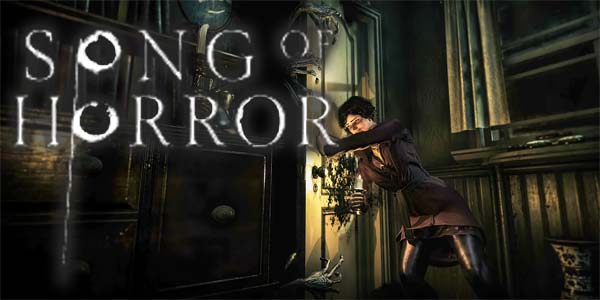
Not only is it really great to play an indie horror game that captures the slow and thoughtful nature of old-school survival horror, but it's also refreshing to play a good old fashioned gothic horror game. So many indie horror games come off as feeling a bit pretentious with their reliance on suppressed guilt twists for their psychological horror plots. Song Of Horror bucks that trend by being a straight-forward horror story about haunted houses, possessed artifacts, and otherworldly mysteries.
Song Of Horror also ups the stakes by featuring a cast of multiple playable characters, each of whom can be killed off (and removed from the rest of the story) if the player screws up. So not only do we literally not know what eldritch abomination may lie around any given dimly-lit corner, or behind any creaky old door, but if you're not careful, whatever is around that corner or behind that door might put a premature end to a given character's life and story.
Strut and fret your hour upon the stage, and then ...
Song Of Horror was originally sold as an episodic indie horror game on Steam, but the collection of all episodes was released for console as a single game in 2021. It somehow slipped under my radar until last month, when YouTube recommended a video about it by Mert Kay Kay. Each episode includes 3 or 4 playable characters to choose from, each of whom can be permanently killed off if you fail to avoid or escape from the phantasms that haunt each episode. If a character dies, all the items and notes that they've collected will be dropped on the floor at the spot of their death, and that location will be marked on the next character's map. So you don't really lose any progress if a single character dies. If you lose all the characters in a given episode, however, then it's "Game Over"!
Each episode will introduce one or more new characters, but old characters can also re-appear as playable characters if they survived the previous episode(s). Thus, losing a character in an early episode may have the longer-term consequence of reducing the player's available lives (to borrow a term from old arcade parlance) for future episodes, and reducing your margin of error.
Each episode has 3 or 4 playable characters, each of whom can permanently die.
But even if you do manage to screw up and get all 4 characters killed in any given chapter, you only have to restart that chapter. Song Of Horror won't delete your save file and force you to redo the entire game. Each chapter takes 2 -- maybe 3 -- hours to complete on a first-playthrough, and can be done in well under an hour if you know what you're doing. It's actually a loss of progress that is somewhat on par with dying in an old Resident Evil game after doing a fair chunk of exploration without backtracking to a save point.
The legitimate threat of permanently losing a character will naturally raise the stakes of the game and of the horror. It will force the player to play cautiously, to be observant of your surrounding and of context clues in the environment, to pay close attention to sounds and shadows, and to not barge through every door in a rush. In fact, it may do this more effectively than even a game like Resident Evil. Dying doesn't mean simply restarting with the same character and retrying the set piece that got you killed. Dying means permanently losing that character, and having to try again with a new character. Restarting at a checkpoint doesn't simply reset the stakes, it doubles-down on them!
Furthermore, the actual jump scares and dangers are semi-randomized. You won't necessarily encounter the same jump scare or the same monster at the same place and time in any 2 playthroughs. This also keeps things tense, because even on a replay (whether it be a whole new playthrough, or just a respawn with a different character), you can't just memorize all the places to avoid.
[More]
0ffa3716-e34f-4cd6-a026-763157eedc54|0|.0
Tags:Song of Horror, Protocol Games, Raiser Games, horror, cosmic horror, gothic horror, H.P. Lovecraft, perma-death, music, sound, light, dark, Silent Hill
|

| 12 | | | | | | | 60 | | 11 | | | | | | | 55 | | 10 | | | | | | | 50 | | 09 | | | | | | | 45 | | 08 | | | | | | | 40 | | 07 | | | | | | | 35 | | 06 | | | | | | | 30 | | 05 | | | | | | | 25 | | 04 | | | | | | | 20 | | 03 | | | | | | | 15 | | 02 | | | | | | | 10 | | 01 | | | | | | | 05 |
|